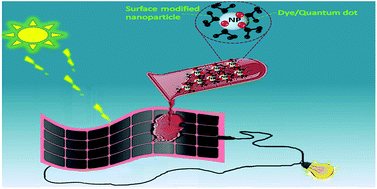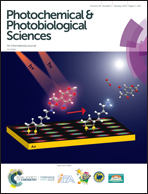Scope of surface-modified molecular and nanomaterials in gel/liquid forms for developing mechanically flexible DSSCs/QDSSCs
Abstract
The advanced lifestyle of the human race involves heavy usage of various gadgets which require copious supplies of energy for uninterrupted functioning. Due to the ongoing depletion of fossil fuels and the accelerating demand for other energy resources, renewable energy sources, especially solar cells, are being extensively explored as viable alternatives. Flexible solar cells have recently emerged as an advanced member of the photovoltaic family; the flexibility and pliability of these photovoltaic materials are advantageous from a practical point of view. Conventional flexible solar cell materials, when dispersed in solvents, are usually volatile and create severe stability issues when incorporated in devices. Recently, non-volatile, less viscous functional molecular liquids/gels have been proposed as potential materials for use in foldable device applications. This perspective article discusses the scope of surface-modified non-volatile molecular and nanomaterials in liquid/gel forms in the manufacturing and deployment of flexible photovoltaics.

- This article is part of the themed collection: 2019 Perspective article collection


 Please wait while we load your content...
Please wait while we load your content...